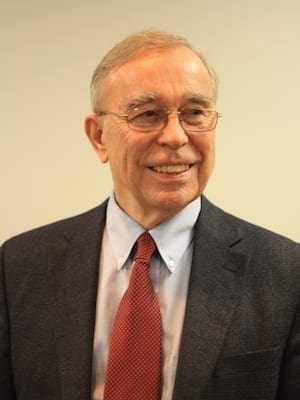Martin Luther’s influence during the Protestant Reformation was enormous, but with the acceptance of Scripture as the authority, many individual interpretations began to appear, creating a pluralism of Reformations.
Historians commonly identify five of these patterns of Reformation.
Followers of Luther created the Lutheran tradition. They adopted the Augsburg Confession in 1530 but then debated theology for 50 years before reaching a settlement in the Book of Concord (1580), the basis of the worldwide Lutheran Communion. In 2017, they will celebrate their 500th anniversary.
A second family of Protestants is usually designated “radicals.” The largest of these were various Anabaptist groups.
Some of the more radical reformers rejected the doctrine of the Trinity since they did not find the word in Scripture, and others rejected the sacraments, stressing the spiritual nature of Christianity: “God is spirit,” they proclaimed.
The Anabaptists denied infant baptism; instead, they argued that one must personally choose to follow Christ. Only after a believer made a profession of faith was it appropriate to be baptized, and infants do not have the capacity to make this choice.
For this reason the Anabaptist churches were small gatherings of Christians. The descendants of this model were called “Believers’ Churches.” They flourish today in Baptist life, a denomination that appeared almost a century after the Anabaptists.
At the time of their origin, Anabaptists were seen to be social revolutionaries and were not protected by law. Many were killed for their faith.
Not surprisingly, they wrote defenses of freedom of conscience in matters of faith. Both ideas – the voluntary church and religious toleration – are important legacies of this minority group of Protestant Reformation “others” or outsiders.
A third family of Reformation Christians are the followers of Ulrich Zwingli in Zurich and John Calvin in Geneva. They are the chief founders of the Reformed tradition, a name still carried on in the Dutch Reformed Church.
The Reformed tradition was especially influential in England and Scotland, where Presbyterians, Congregationalists and Baptist versions of Protestantism appeared.
Calvin embraced predestination, generating a response from Arminius who wanted to ensure a place for free will in understanding the nature of salvation. Calvin’s approach to Scripture was less flexible than Luther’s. He looked for guidelines for Christian life and practice.
Luther was openly freer, allowing for a wide range of Christian practices, if not forbidden by Scripture. Luther wanted to retain a real presence of Christ in the Supper; Zwingli saw it as a spiritual memorial, and Calvin mediated between them, teaching a real but spiritual presence.
All three of them emphasized the necessity of faith in the communion experience.
In the first century after Luther, the Protestants recognized by law were either Lutheran or Reformed. Luther and Calvin are the two giants of Reformation thought.
Both taught justification by faith alone and the authority of Scripture. Both opposed Catholics and Anabaptists. Both taught that the marks of the true church are two: the Word rightly preached and the sacraments rightly administered.
A fourth pattern of Reformation appeared in England. Henry VIII remained Catholic in his theology, but he rejected the authority of the papacy, and he closed the monasteries of England, confiscating this property for his own use.
Thomas Cranmer produced the Book of Common Prayer, a Protestant guide to worship. Henry’s daughter, Elizabeth, adopted Cranmer’s position, establishing the Anglican/Episcopal tradition. Through British expansion and immigration, Anglicanism enjoys a large worldwide communion today.
Puritans influenced by Calvin thought that the reform had not purified the church sufficiently. Many separated from the Church of England and established new denominations in England and America.
The fifth expression of Reformation is found in Catholicism itself. Ignatius Loyola established the Jesuit order, which provided personnel to counter the Protestant Reformation expansion, and the Council of Trent reaffirmed Catholic doctrine. The old church was resourceful enough to revitalize Catholicism in Southern Europe despite massive losses to Protestants in Northern Europe.
The Reformation legacies are many. We have noticed primarily those affecting the church. The Protestant Reformation produced new theological ideas and eventually an even greater variety of denominations. The unity of the Old Church was destroyed.
The political, social and cultural implications of the Protestant Reformation are too numerous to develop here. Two will have to suffice.
First, the Protestant Reformation was achieved at enormous human costs.
Most regions adopted a single form of Christianity, expressed in a confession of faith.
Europeans tried to coerce conformity to either Catholic or Protestant views. They went to war over religion with massive population losses over religious convictions in the 16th and 17th centuries.
Historians rank the religiously inspired Thirty Years’ War (1618-1648) as the most destructive war in Europe between the Hundred Years’ War and World War I.
In England, most non-Anglican dissenting groups were not granted toleration until 1689. The long Reformation thus lasted about two centuries.
A second example of the consequences of the Protestant Reformation is found in the phenomenon of European expansion.
Europeans discovered a new world just before the Reformation. Catholics expanded into South and Central America and Protestants into North America, creating vastly different cultures.
The Protestant Reformation gives us much to ponder. Reflection on Reformation Sunday, as on every Sunday, provides occasion for celebration as well as for repentance.
Bill Pitts is professor of church history at Baylor University in Waco, Texas, and is currently serving as president of the Baptist History and Heritage Society.
Editor’s note: This is the second of two articles by Pitts on the Protestant Reformation. Part one is available here.

